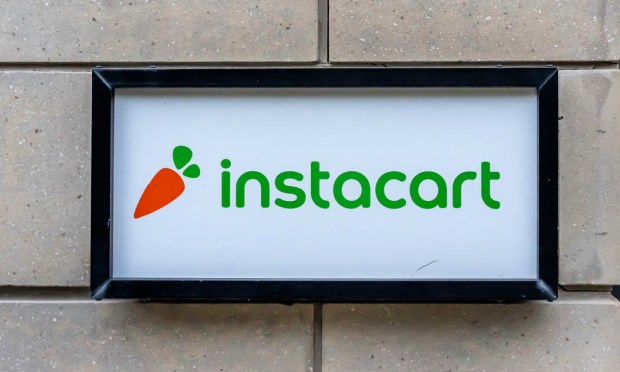Instacart IPO Target Could Be Under $10 Billion

Instacart is reportedly aiming for an initial public offering target far below its past valuation.
The grocery delivery company’s initial public offering (IPO) could come by next week, with the firm targeting a valuation between $8.6 billion to $9.3 billion, the Wall Street Journal reported Sunday (Sept. 10), citing sources familiar with the matter.
As the report noted, that figure is roughly a fourth of the $39 billion valuation Instacart said it achieved following a funding round in 2021, the year it began preparing its long-awaited IPO.
A spokesperson for Instacart declined to comment.
Last week saw reports that Instacart was planning to set its listing price and begin an investor roadshow on Monday (Sept. 11), before pricing its IPO the following week.
The company, following years of discussion and speculation, filed its plans last month to go public with the Securities and Exchange Commission.
As PYMNTS’ Karen Webster wrote last month, with that filing came “a glimmer of hope that the 18-month tech IPO drought may be ending.”
EquityZen’s head of market insights Brianne Lynch wrote that roughly 1400 private companies worth $1 billion or more are waiting for a better time to test the waters in the public markets.
“Whether Instacart opens the Tech IPO floodgates or turns the spigot into something more like a constant trickle, we’ll wait to see,” Webster wrote.
In the meantime, PYMNTS intelligence finds that there’s a decent amount of opportunity for companies like Instacart to capture a larger share of the grocery market.
The study “Tracking the Digital Payments Takeover: Catching the Coming eCommerce Wave,” created in collaboration with Amazon Web Services (AWS), found while that 12% of grocery purchases are made using a computer or mobile device, 32% of shoppers said they are very or extremely likely to up their digital grocery purchases in the next year.
And if online grocery buying still comes with friction, many consumers are taking advantage of the convenience the technology affords them and its ability to expand their choices.
“Instacart has eliminated consumers’ need to consider proximity in their decision about where to shop for groceries,” Webster wrote.
“Maybe shoppers want to shop using Instacart at the same store they’d otherwise visit in person. But maybe they’d rather try a store they would otherwise skip because it requires a 40-to-50-minute round-trip drive — as many now do.”

